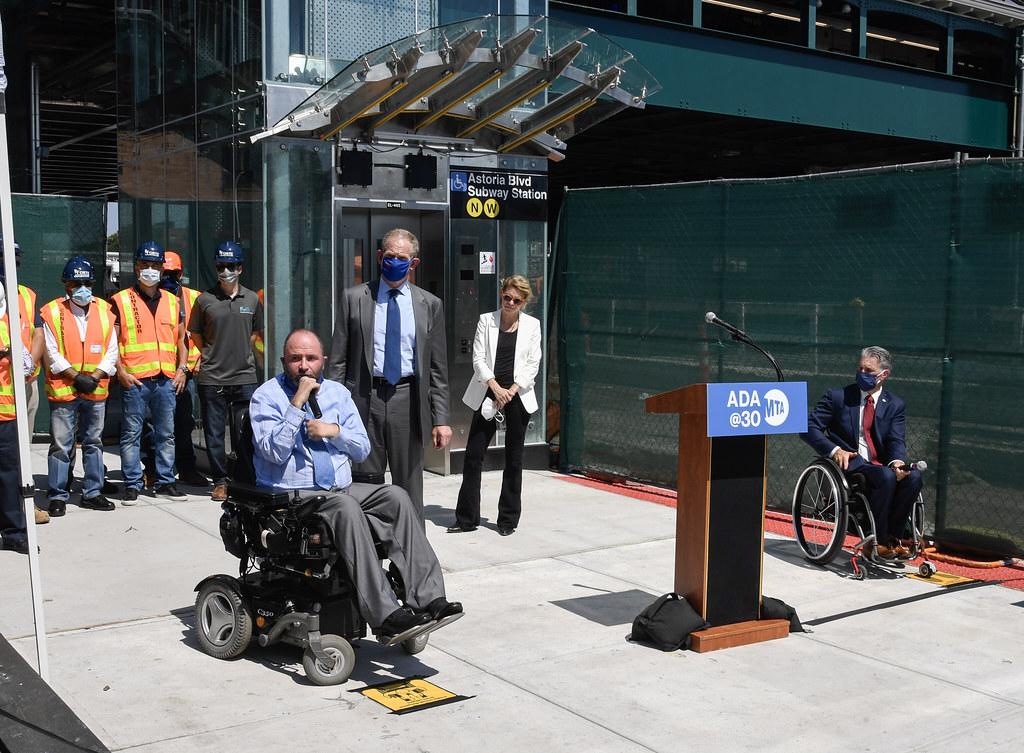Transforming NYC Transit: MTA’s Bold Vision to Boost ADA Accessibility for Millions
Expanding Accessibility: MTA’s Commitment to Serve 70% of Riders with Disabilities
The Metropolitan Transportation Authority (MTA) is embarking on a groundbreaking initiative to dramatically improve accessibility across New York City’s transit network. With a goal to make nearly 70% of its ridership ADA-compliant in the coming years, the agency is investing heavily in infrastructure upgrades and technological innovations. This comprehensive plan aims to dismantle barriers that have long hindered passengers with disabilities, fostering a transit environment that is equitable, user-friendly, and future-ready.
Central to this effort is the installation of new elevators, ramps, and tactile guidance systems, alongside enhanced auditory and visual aids tailored for riders with sensory impairments. The MTA also plans to launch a dedicated accessibility task force to oversee progress and incorporate rider feedback continuously. These measures reflect a commitment not only to compliance but to creating a transit system that genuinely serves all New Yorkers.
| Borough | Stations Receiving Upgrades | New Elevators to be Installed | Projected Completion Year |
|---|---|---|---|
| Manhattan | 40 | 50 | 2027 |
| Brooklyn | 30 | 45 | 2028 |
| Queens | 25 | 40 | 2028 |
| The Bronx | 15 | 15 | 2029 |
| Staten Island | 10 | 10 | 2029 |
Overcoming Obstacles: Navigating the Complexities of Accessibility Upgrades
While the MTA’s vision is ambitious, the path to widespread ADA compliance is fraught with challenges. Many subway stations were constructed over a century ago, without consideration for accessibility, resulting in structural limitations such as narrow passageways, deep platforms, and protected historic elements. These factors complicate the integration of elevators, ramps, and other accessibility features.
Additionally, the MTA must balance the need for upgrades with minimizing disruptions to millions of daily commuters. Construction windows are limited, often requiring work during off-peak hours or overnight, which can extend project timelines and increase costs. Financial constraints further complicate progress, as funds must be judiciously allocated among competing transit priorities.
To address these hurdles, the MTA is adopting a phased rollout strategy, prioritizing stations with the highest ridership and greatest accessibility needs. Innovative engineering solutions are being developed to retrofit historic stations sensitively, while transparent communication efforts keep the public informed about construction schedules and service changes.
| Challenge | Effect | Response Strategy |
|---|---|---|
| Aging Station Infrastructure | Difficult retrofits and design constraints | Custom engineering and preservation-sensitive designs |
| Budgetary Limitations | Project delays and limited scope | Phased funding and prioritization of critical sites |
| Minimizing Service Interruptions | Potential rider inconvenience | Scheduling work during off-peak hours |
Harnessing Technology and Infrastructure Enhancements to Revolutionize Accessibility
Technological advancements are playing a pivotal role in the MTA’s accessibility overhaul. The agency is deploying state-of-the-art elevator and escalator monitoring systems that provide real-time operational updates through mobile applications and station displays. This empowers riders with disabilities to plan their journeys with greater certainty and flexibility.
Moreover, AI-driven predictive maintenance tools are being introduced to anticipate equipment failures and expedite repairs, significantly reducing downtime. Infrastructure improvements include widening station entrances, installing tactile paving for the visually impaired, and upgrading signaling systems to enhance overall safety and accessibility.
| Upgrade | Benefit | Expected Completion |
|---|---|---|
| Elevator System Modernization | Greater reliability and faster repair times | Q4 2025 |
| Platform Edge Safety Enhancements | Safer boarding and alighting | Q2 2024 |
| Real-Time Accessibility Notifications | Improved rider awareness and trip planning | Q1 2024 |
| Station Entrance Expansion | Enhanced wheelchair and mobility device access | Q3 2026 |
Policy Initiatives to Foster Inclusive and Equitable Transit Access
Physical improvements alone are insufficient to guarantee equitable transit access. The MTA recognizes the importance of complementary policy measures to support riders with disabilities. Upgrading real-time accessibility applications to provide instant alerts about elevator outages, shuttle services, and alternative routes is a priority. These tools will empower users to navigate the system independently and confidently.
Staff training programs focused on disability awareness and sensitivity are also being expanded to ensure frontline employees can offer informed and compassionate assistance. Furthermore, the MTA is committed to directing resources toward underserved communities, ensuring that accessibility enhancements benefit all neighborhoods equitably.
- Allocating capital investments based on detailed demographic and ridership equity studies
- Incorporating community input through ongoing engagement and feedback mechanisms
- Collaborating closely with disability advocacy organizations to co-create effective solutions
| Focus Area | Action Item | Anticipated Outcome |
|---|---|---|
| Technology | Enhance accessibility app features | Real-time, actionable rider information |
| Workforce Development | Conduct disability sensitivity training | Improved customer service and rider satisfaction |
| Infrastructure Equity | Prioritize funding for underserved areas | Broader access and reduced disparities |
Conclusion: Paving the Way for a More Accessible New York City Transit System
The MTA’s comprehensive plan to extend ADA accessibility to 70% of its riders represents a transformative leap toward a more inclusive public transportation network. Despite the inherent challenges of upgrading a century-old system, the agency’s strategic investments in infrastructure, technology, and policy reforms signal a future where mobility is accessible to all New Yorkers.
Ongoing commitment, transparent oversight, and community collaboration will be essential to turning these ambitious goals into everyday realities. For millions who depend on the subway and buses, these advancements promise a more equitable, reliable, and dignified transit experience.













